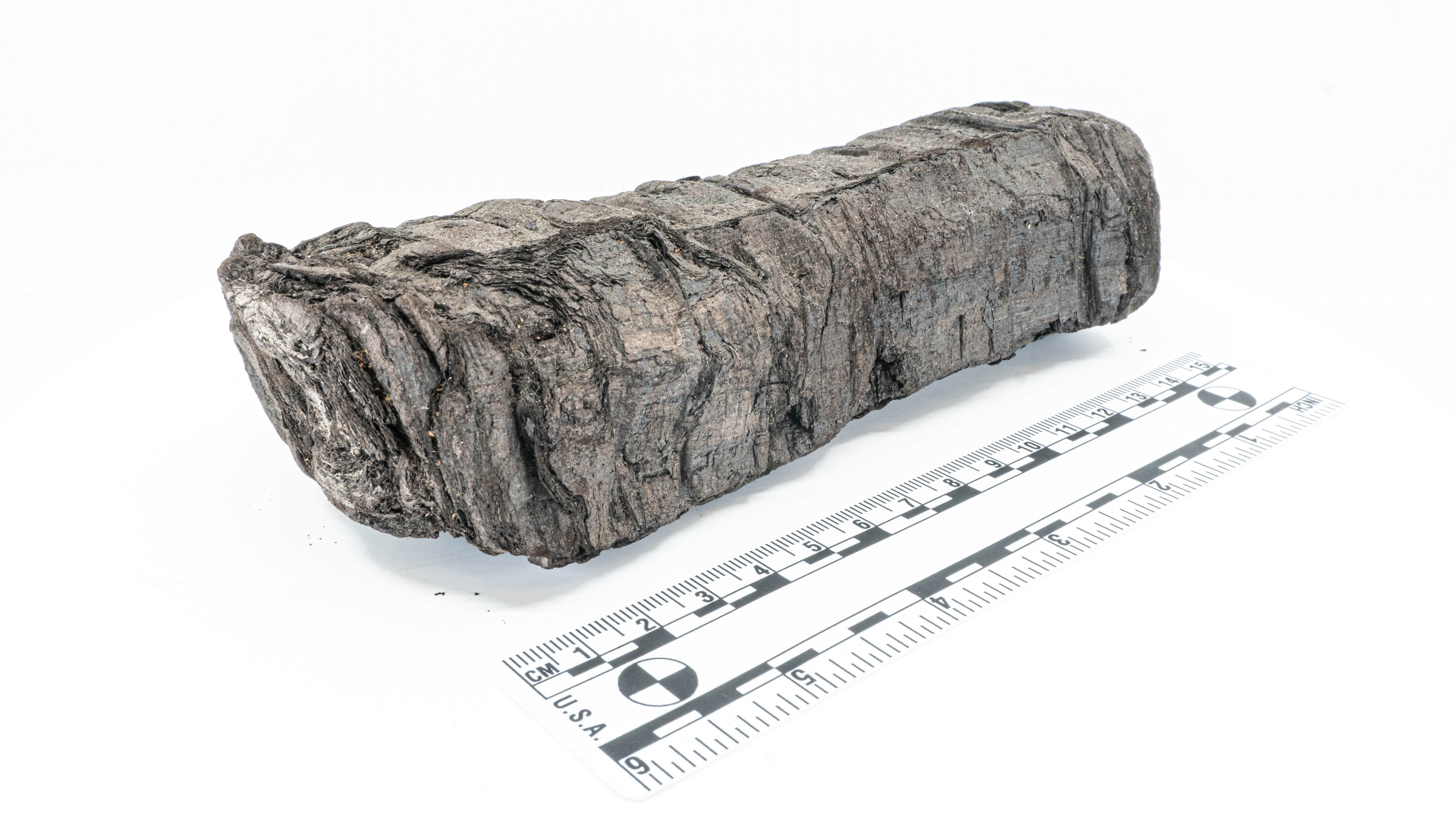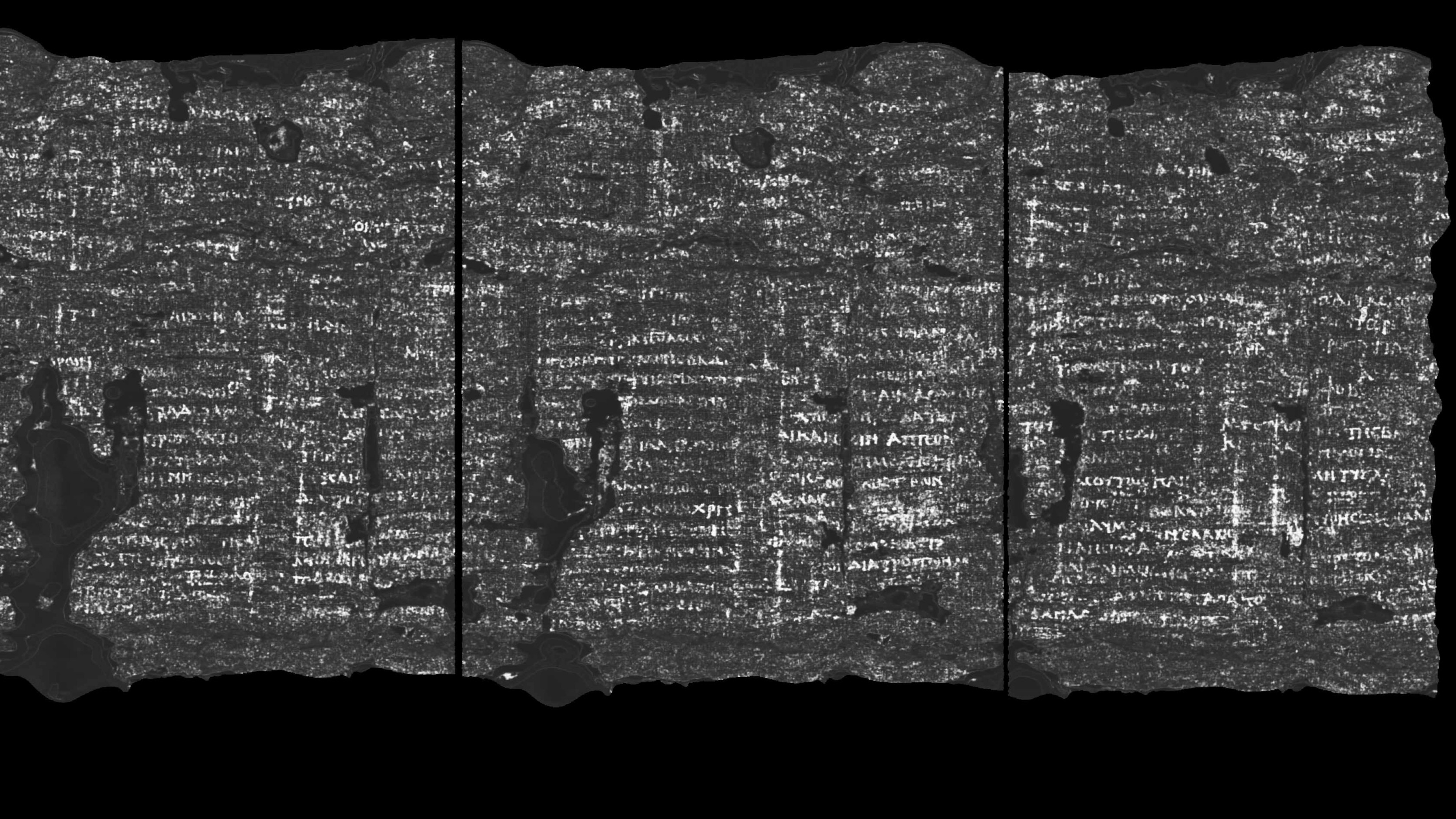
A Herculaneum scroll buried by Mount Vesuvius’ eruption virtually 2,000 years within the past is eventually legible, now that researchers maintain used artificial intelligence (AI) and a particle accelerator to peep within the charred artifact.
Whereas the bulk of the veteran Greek textual insist is tranquil undeciphered,
The scroll, named scroll PHerc. 172, is and not utilizing a doubt one of many who survived the eruption of Mount Vesuvius in A.D. seventy nine. The eruption spat out a pyroclastic waft of volcanic ash, toxic gases and other gives that
The scrolls were burned and then
A crew of librarians, computer scientists and students
“It’s an incredible moment in history as librarians, computer scientists and scholars of the classical period are collaborating to see the unseen,”
Related:
Rep the field’s most spell binding discoveries delivered straight to your inbox.
Discovering veteran words
Archeologists excavated the scrolls in Herculaneum within the 1750s. In the early nineteenth century, Ferdinand IV (who lived from 1751 to 1825), king of Naples and Sicily, later proficient PHerc. 172 and 5 other scrolls to the then future king of the U.K.,
In 2024, researchers scanned PHerc. 172 within the U.K.’s nationwide synchrotron look at lab, Diamond Light Provide. The synchrotron quickens electrons to virtually the
Bodleian Libraries teamed up with computer scientists at Vesuvius Deliver of affairs, an AI-basically basically based opponents for decoding Herculaneum scrolls, which used AI to attend the clarity of the textual insist published within the synchrotron scans, according to the assertion.
To this point, the words decoded existing thinker and poet
Vesuvius Deliver of affairs’s machine learning instrument can detect ink but would now not realize language or see characters relish
“This scroll contains more recoverable text than we have ever seen in a scanned Herculaneum scroll,” Vesuvius Deliver of affairs co-founder
In 2023, a Vesuvius Deliver of affairs contestant used AI to turn into the indispensable particular person to
Patrick Pester is the trending files author at Are residing Science. His work has regarded on other science web sites, equivalent to BBC Science Focal point and Scientific American. Patrick retrained as a journalist after spending his early profession working in zoos and wildlife conservation. He used to be awarded the Master’s Excellence Scholarship to stare at Cardiff College where he accomplished a grasp’s degree in world journalism. He also has a 2nd grasp’s degree in biodiversity, evolution and conservation in action from Middlesex College London. When he’s now not writing files, Patrick investigates the sale of human remains.


